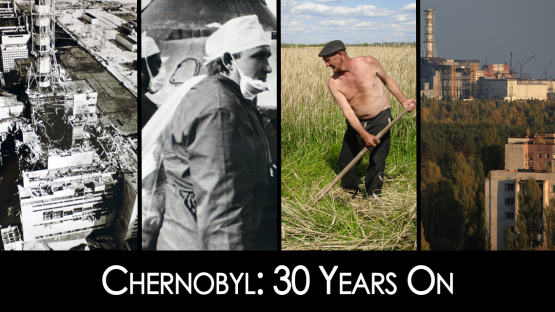Thirty years ago today, an unprecedented aerial release of radionuclides spread over parts of Belarus, Russia and Ukraine following the nuclear power plant accident at Chernobyl. It was the most serious nuclear accident ever, exposing several hundreds of thousands of people to high levels of radiation and forcing some 350,000 to leave their homes in contaminated areas.
“On the 30th anniversary, we remember with respect and admiration those who lost their lives in the emergency and recovery operations,” said IAEA Director General Yukiya Amano in a statement marking the anniversary.
The accident also had a profound impact on the nuclear industry, leading to increased cooperation on safety and the adoption of new legal instruments (see box). Most crucially, it focused global attention on safety and the importance of human and organizational factors in achieving it. As a result, the term “safety culture” was coined.
Safety culture recognises the importance of the links between humans, technology and organizations in the systematic development and implementation of safety standards and procedures at nuclear facilities.
Falling radiation levels
Since 1986, radiation levels have decreased considerably, and remediation activities are well under way. Life has returned to normal in much of the affected area, and people are carrying on with their daily activities. At the same time, in the Chernobyl Exclusion Zone, an area with a radius of 30 kilometres around the plant, public access and inhabitation are restricted.
The IAEA has provided support to Ukraine, Belarus and Russia in environmental remediation, decommissioning and management of radioactive waste and strengthening the safety levels at the Chernobyl nuclear power plant — in several instances in cooperation with other United Nations organizations.
Global Action for the Region
Under the 2003-2005 Chernobyl Forum, an IAEA initiative that involved other United Nations organizations, the World Bank and the governments of the three affected countries, a comprehensive report was issued after conducting a detailed evaluation and assessment of the accident site and its consequences. “The idea was to come up with a consolidated view on the health, environmental, and socio-economic impact,” said said Gerhard Proehl, Head of the Assessment and Management of Environmental Release Unit at the IAEA.
The Forum provided recommendations to the Governments of Belarus, the Russian Federation and Ukraine on environmental remediation, special health care programmes and for economic and social policy.
The United Nations dedicated 2006-2016 the ‘Decade of Recovery and Sustainable Development of the Affected Regions’. This resulted in global coordination efforts to address the specific needs in the affected region and to mitigate the impact of the accident. IAEA activities under this plan included support for the remediation and rehabilitation of contaminated areas.
The International Chernobyl Radiation Information Network aims to increase public awareness. The IAEA, the World Health Organization, the United Nations Children’s Emergency Fund and the United Nations Development Programme have worked to provide necessary information to people in plain language on what is being done to protect them; what is being monitored, how safe the food products are, and whether the drinking water and the soil are safe. “The purpose was to bring more direct information to the people, through regional health and educational authorities, local communities, NGOs and newspapers to remove the fear factor and build confidence,” Proehl said.










